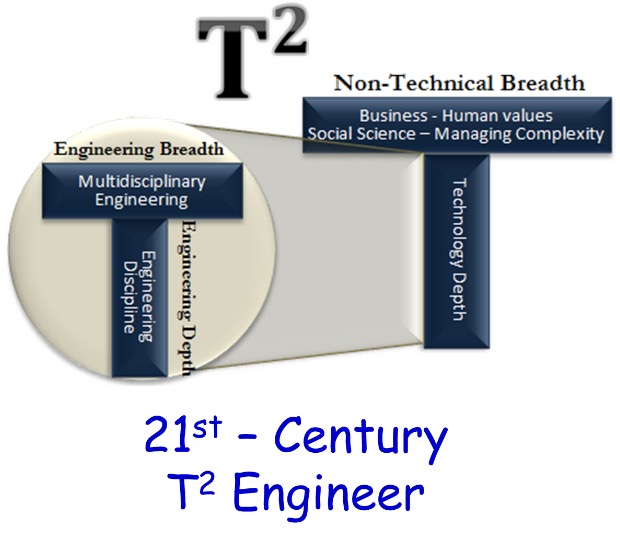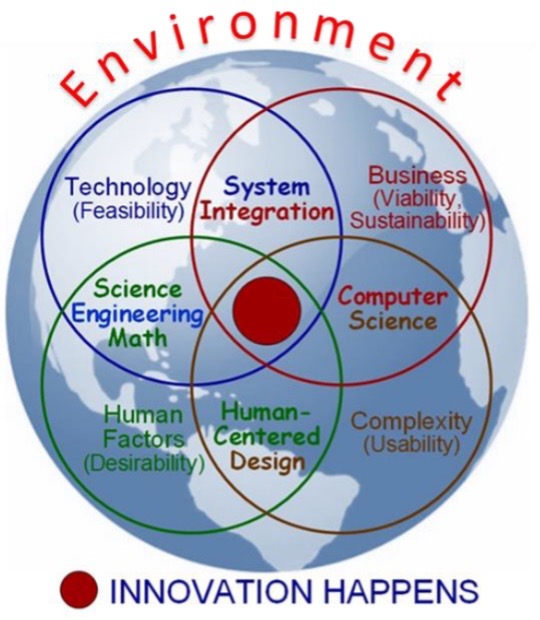Key points:
- Engineering education must evolve if it is to serve our students and future engineers
- Complexity requires an engineering skill set with technology depth and also non-technical breadth
In multidisciplinary engineering system design, we integrate. From the very start of the design process, we combine the physical system with sensors, actuators, computer control, and human interfaces to give it some intelligence and decision-making capability.
At its very heart, system complexity is synonymous with power. However, this power can be good or bad. If the complexity in any system is not tamed, the consequences can be devastating. We have witnessed some of the consequences of untamed complexity in the 1986 Chernobyl nuclear plant accident, the 2008 world financial meltdown, and the 2010 Gulf of Mexico oil spill. All are examples of systems of unimaginable complexity–intended or not–that were left unmanaged without common-sense, human-centered checks and balances, which resulted in catastrophes of immense scope.
We are now surrounded by high-risk technological systems in all aspects of our lives. What systems are prone to system accidents? According to Charles Perrow in his book Normal Accidents (Princeton University Press 1999), two concepts need to be considered: interactiveness and coupling. Simple, comprehensible interactions among system components are predominate in all systems.
But as the complexity of a system increases, the probability that baffling, unintended interactions, not intended in the design, increases dramatically. Tightly-coupled systems have more time-dependent processes, the sequences are invariant, and there is little slack. The buffers, redundancies, and substitutions must be designed in; they must be thought of in advance. The world of systems can be organized in a two-variable array: loose vs. tight coupling and predictable vs. baffling interactions. There are no answers here. Engineers must manage complexity and prevent catastrophic failures.
How does this complexity impact engineering education? In a complex system, learning how all the pieces – constant and variable – interact gives a depth of understanding that averts catastrophe. That is what we mean by human-centered design – understanding the interfaces among technology, people, communities, governments and nature. This is what makes complexity manageable. All complex systems have, as a foundation, fundamental principles or core knowledge that cannot be ignored.
However, there must also be a flexibility from the engineering perspective to respond to problems that inevitably arise. Clearly, the typical discipline-specific engineer is not well-equipped to manage such complexity; not even an engineer with multidisciplinary engineering breadth can do an effective job. Complexity demands an engineering skill set with technology depth and also non-technical breadth—specifically, human-centered design expertise capable of managing complexity. Complexity demands a T2 Engineer, as the diagram shows.

Why are these engineers not being created, and how do we ensure that they will be created? The urgent problems society faces are multidisciplinary in nature, complex, and ever-changing.
Engineering graduates need to be able to adapt and apply technology that is human-centered, desirable, feasible, viable, sustainable, usable, and manageable, as the innovation diagram shows:

Incoming students need to experience a culture change. They need to transform from the world of memorizing, test-taking, and focusing on grades to the world of critical-thinking and problem solving, turning easily accessible information into insight and understanding, and taking responsibility to become an engineer. So, if we all know what should happen in engineering education, why is it not happening?
As I see it, there are two main impediments to engineering education reform. First, the silo structure in a typical engineering college does not foster reform. Engineering departments typically don’t collaborate or interact in a multidisciplinary way and fail to realize that doing so would enhance, not diminish, what they do. Second, there is a failure of faculty to get out of their comfort zone, i.e., a failure to become comfortable being uncomfortable, become involved in real-world problem solving, and to respond to the challenges of teaching multidisciplinary engineering problem solving in an integrated, discovery-learning mode.
Knowledge in engineering education needs to be unbundled and rebundled to integrate it all, give it balance between theory and practice, and give it relevance to the solution of the multidisciplinary problems society faces. Engineering education done in this manner can mitigate catastrophe!
Related:
Engineering education is broken
- The link between AI fluency and the next education revolution - May 3, 2024
- Coalition looks to accelerate LER adoption in higher ed - May 1, 2024
- Selective universities won’t be disrupted - April 30, 2024

